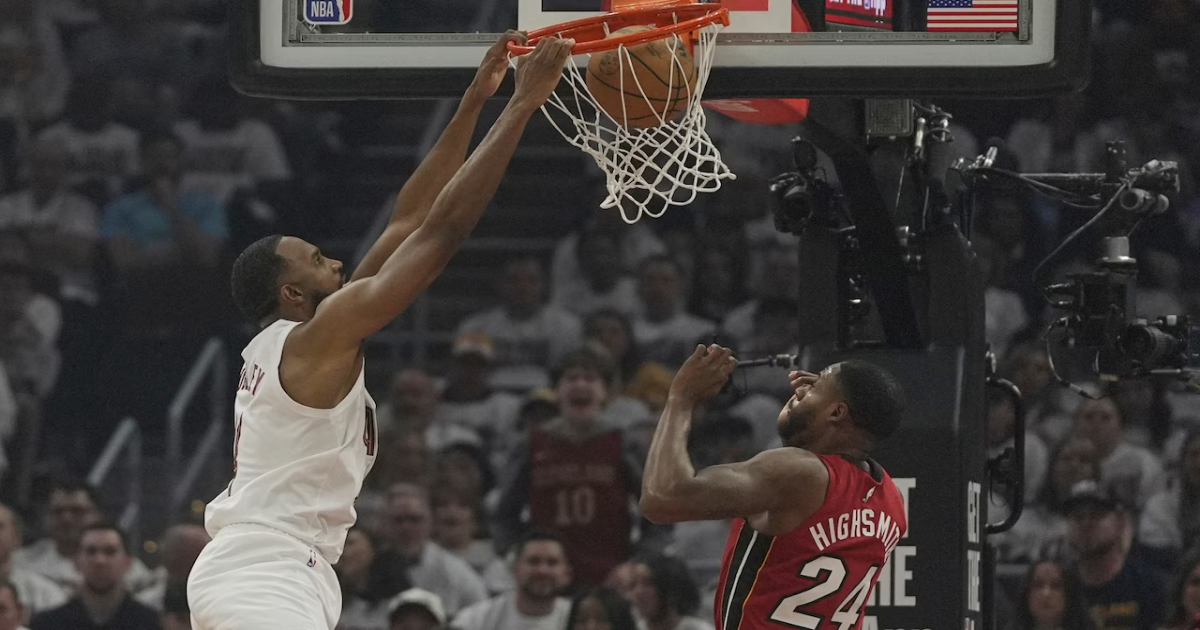CLEVELAND, Ohio — In this era of the NBA, teams either live or die by the 3-ball. And the Cavs suffocated the Heat with the net they scorched in the first half of Game 2.
Fourteen of Cleveland’s 24 made field goals came from distance. If Game 1’s 18 made 3s were a spark, Game 2’s first half is a full-blown inferno.
Max Strus — the ex-Heat sharpshooter — found his rhythm early with four 3s, while Donovan Mitchell, Sam Merrill, and De’Andre Hunter chipped in two apiece, keeping the floor spaced and the scoreboard ticking.
But Miami wasn’t exactly cold.
Tyler Herro’s fingerprints were all over this game, as he did everything he could to keep the Heat in the contest.
Like in their first meeting of the playoffs, Herro had a successful first half — he scored 17 of Miami’s 51 points, including three triples of his own.
The Heat made nine triples through the first two quarters and finished with 13 treys in Game 1.
Still, the Cavs held a significant 17-point lead, and once Cleveland took the lead back from the Heat in the first quarter, it was all about Miami playing catch up.
One significant reason, aside from the 3-point barrage, that the Cavs held the advantage was their defensive intensity.
They’ve forced Miami into seven turnovers and 14 points off those miscues in the first half, including 12 points in transition before the Heat could set up their defense or even contemplate going to a zone.
But that’s the kicker for Miami: the zone defense, typically a stabilizer, is rendered useless if Cleveland keeps shooting like this.
Kenny Atkinson said at practice on Tuesday, “Every game it’s going to be someone different.”
And after three guards combined for 85 points in Game 1, it was the forwards pushing the action in Game 2.
How to watch the Cavs: See how to watch the Cavs games with this handy game-by-game TV schedule.
There were some skeptics about Evan Mobley’s lack of aggressiveness in three quarters of Game 1, but with Ty Jerome, Darius Garland and Donovan Mitchell with their foot on the pedal, it wasn’t his night to shine. But through two quarters on Wednesday, Mobley already had more points than he finished with on Sunday.
His success was in part because of his attack mindset and willingness to shoot the shots given to him, but it was also because the Heat were constantly adjusting their defensive coverage.
By extending their coverage to blitz ball-handlers and apply pressure higher up the floor, Miami created cracks in its interior — cracks Mobley exploited with one-on-one opportunities in the paint. And once Mobley got cooking, the Heat overcorrected, collapsing inside and freeing up the Cavs’ shooters for wide-open looks on the perimeter.
De’Andre Hunter, scoreless in his Cavaliers’ postseason debut, also made his presence felt with eight first-half points and two 3s in just 13 minutes. His confidence is growing, and like much of this roster, he’s feeding off the balance and unpredictability that defines this team.
That’s what makes Cleveland dangerous. This isn’t a one-man show. Mitchell remains the consistent catalyst, but the strength of this group lies in its depth. On any given night, any given player can tilt the game.
Heat head coach Erik Spoelstra’s will continue to search for answers, but he may not have the personnel to match his schemes.
And while he’s trying to find a solution, he’ll have to hope that the Cavs stop torching nylon for his tactics to hold water.
